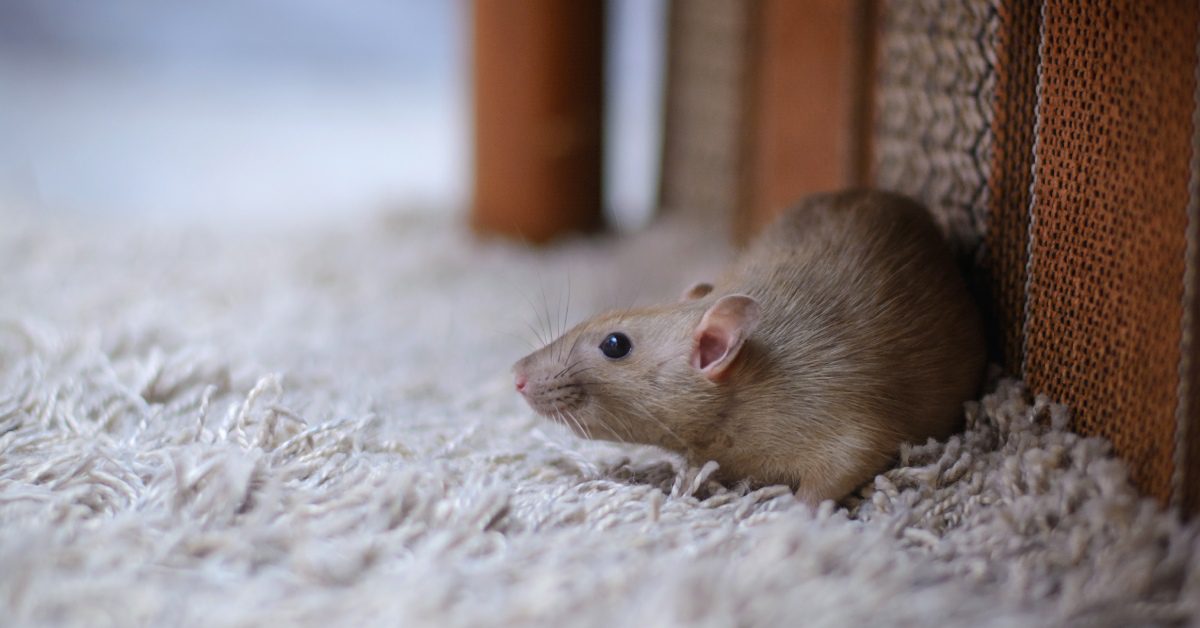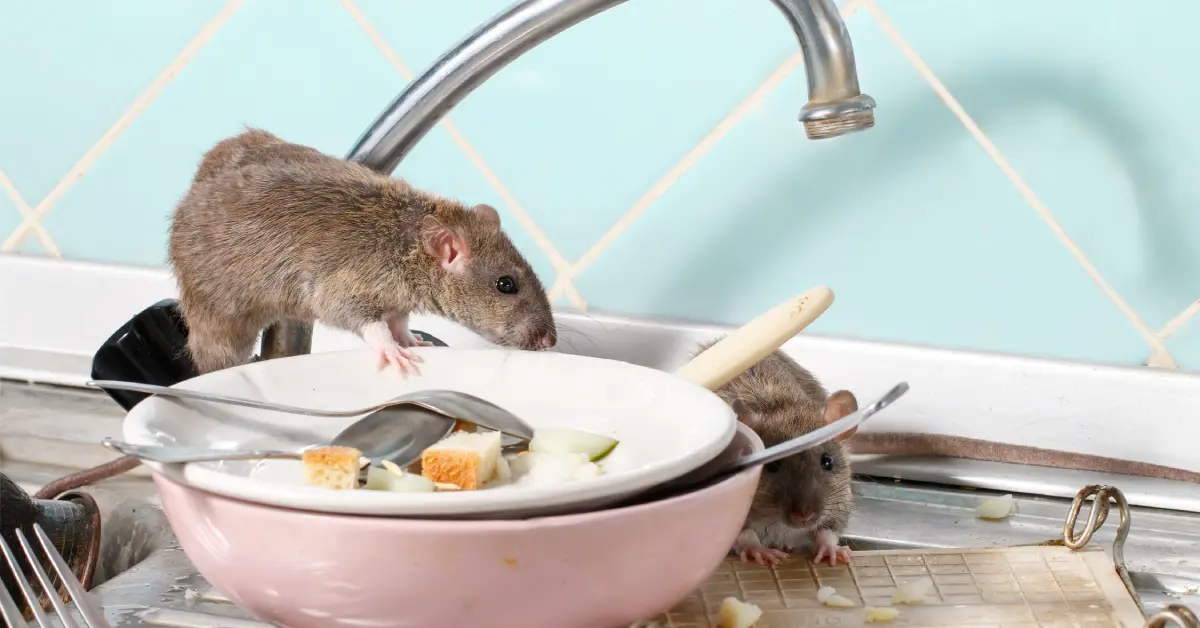
14 Signs Your House May Be Infested With Rats
If you’re noticing strange noises in your walls or you’re finding droppings around your house, you may have rats. Rats are resilient creatures that can easily make their way into homes, causing damage and posing health risks. Be on the lookout for these signs of a rat infestation in your house.
Strange Noises
Rats are nocturnal creatures, meaning they are most active during the nighttime. Their constant movement and activity can produce unusual sounds, such as scratching, scurrying, or squeaking. If you hear these noises coming from your walls, ceilings, or attic, rats may have taken up residence in your home. These disturbances often occur when the household is quiet, making the night the prime time for such auditory clues. Additionally, these noises may come with gnawing sounds, as rats chew through various materials.
Gnaw Marks
Rats have incredibly strong teeth that never stop growing, which necessitates constant gnawing to keep them maintained. This behavior leads to distinctive gnaw marks on various objects in your home, such as wooden furniture, electrical wires, pipes, and plaster walls.
These marks typically appear as rough edges or small holes and showcase the tenacity and persistence of these rodents as they navigate through your living space. The presence of gnaw marks, particularly on wires, is especially concerning due to the potential fire hazards they pose.
Droppings
One of the most unmistakable signs of a rat infestation is the presence of droppings. Rat droppings are small, dark, and resemble black grains of rice. They are commonly found in secluded areas, such as behind furniture, in cupboards, or along baseboards. Fresh droppings are dark and glossy, while older ones may appear gray and dusty. Droppings signal rat activity, but they also pose health risks since they can transmit diseases and contaminate surfaces in your home.
Nests
Rats build nests using shredded paper, fabric, and insulation. You can typically find these nests in hidden areas, such as attics, basements, and closets. Nests can vary in size depending on the number of rats and the availability of materials, and they provide a sheltered environment for rats to breed and raise their young.
Grease Marks
As rats navigate through your home, they follow established pathways, often leaving behind grease marks on walls, floors, and baseboards. The oils and dirt present in rat fur causes these marks, which transfer onto surfaces as they travel. Over time, these smudges can build up into visible streaks, particularly along well-traveled rat pathways. These grease marks indicate rat activity and can also help you identify the routes they frequently use, providing clues for setting traps or sealing entry points.

Chewed Food Packaging
Rats are notorious for raiding pantries and can chew through cardboard, plastic, and foil packaging to access food. Food packaging that bears gnaw marks is a clear indication of rat activity and a need to secure your food storage. Rats are persistent when searching for food, and their ability to chew through various materials makes it essential to store food in airtight, hard containers to prevent contamination and waste.
Strange Smells
An infestation of rats can lead to a distinct musky odor that becomes quite pungent, especially when their numbers are large. The smell is often most noticeable in confined spaces, and you’ll also often notice the stench of urine or droppings. This odor is a result of the accumulation of waste and can be persistent, lingering even after the removal of the infestation.
Footprints
In dusty or dirty areas, such as basements or attics, rats may leave footprints as they move about. Their tracks consist of small prints with four toes on the front feet and five on the hind feet. You can often see these footprints in a line or a dispersed pattern where rats frequently travel. Footprints provide tangible evidence of rat activity and can help gauge the level of infestation and the specific routes and high-traffic areas that require closer inspection. Carefully examining these patterns can reveal much about the behavior and frequency of rat movements, offering clues to effectively address the problem.
Visible Rats
While rats tend to avoid human interaction by remaining hidden during daylight hours, spotting a rat in your home during the day usually indicates a significant infestation. This behavior suggests that the population has grown beyond the available resources, resulting in food scarcity or overcrowding, which forces rats to take risks in search of sustenance. Seeing a rat in the open is a strong signal that you need to take immediate action to address the infestation.
Holes and Entry Points
Rats are capable of squeezing through remarkably small openings, often no larger than a quarter. Conducting a thorough inspection of your walls, foundation, roof, and any other potential entry points for signs of tampering or small holes that could serve as gateways for these rodents is essential. Identifying and sealing these entry points prevents further infestations while also reducing the likelihood of rats re-entering your home after removal efforts.
Chewed Wires
A dangerous aspect of rat infestations is their tendency to chew on wires and cables, which can pose a serious fire hazard. Rats gnaw on these materials to keep their continuously growing teeth in check, often resulting in frayed wires and unexpected electronic malfunctions. This destructive behavior compromises the safety of your home while also requiring costly repairs or replacements.
Addressing this issue promptly is crucial to prevent potential accidents and ensure that your electrical systems remain safe and functional. Regularly inspecting your wiring and installing protective coverings can mitigate these risks.

Pet Behavior
If you have pets, particularly cats or dogs, they may become fixated on certain areas or act agitated due to the presence of rats. Pets have heightened senses and may detect intruders before you do. Unusual pet behavior can serve as an early warning sign of a rat infestation, so be on the lookout for odd behaviors, such as excessive barking, pawing at specific locations, and heightened alertness.
Paying attention to your pet’s reactions and following their cues can lead to early detection and intervention, potentially saving time and resources in dealing with the issue.
Ignoring a rat infestation can lead to damage to your property and potential health risks. If you notice any of these signs in your home, take immediate action with the help of Legacy Rodent Control to get rid of the rat infestation. We’re the rat exterminators you can count on to set traps, seal entry points, and eliminate the infestation.
